Guide To North Korean Navy's Submarine Types
 With approximately 70 boats North Korea has possibly the largest submarines fleet in the world. It is rivalled only by the U.S. navy and PLAN (Chinese Navy). And while the submarines themselves may be small or antiquated, the men who man them have a proven track record. They exhibit loyalty, discipline, basic naval competence and aggressive leadership.
With approximately 70 boats North Korea has possibly the largest submarines fleet in the world. It is rivalled only by the U.S. navy and PLAN (Chinese Navy). And while the submarines themselves may be small or antiquated, the men who man them have a proven track record. They exhibit loyalty, discipline, basic naval competence and aggressive leadership.
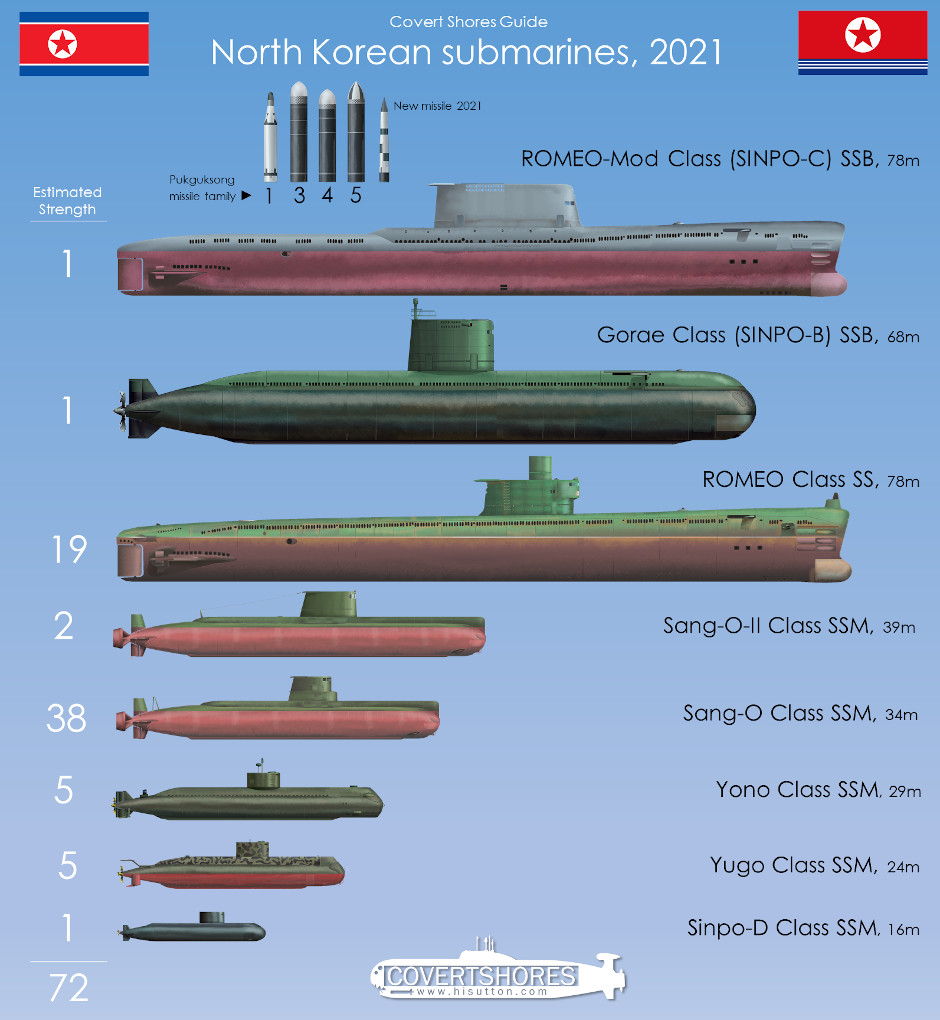
CLICK to Enlarge. Original artwork.
Under the regime of Kim Jong-Il (1997-2011) they were involved in a series of operations in South Korean waters. On March 26 2010 one of them attacked and sunk the South Korean corvette Cheonan. The torpedo broke the warship in two. It is unclear how much of these qualities remains under the leadership of Kim Jong-Un. But there seems little reason to presume that it has significantly altered.
What has changed however is the emphasis. While his father mostly built a large fleet of midget submarines, Kim Jong-Un is focusing on ballistic missile submarines. Not exclusively, there is a mysterious new midget submarine too, but substantially. This is combined with an aggressive missile test schedule which, over the course of five years these have progressed from short range wobbles to serious capabilities. Now when the North conducts a test launch, even of a brand new missile, we expect a success. It is a formidable capability and one which is shaping the force.
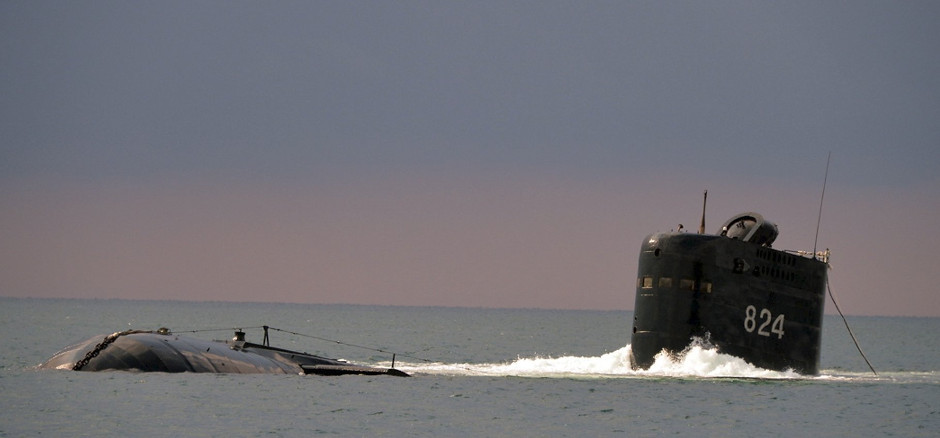
The Gorae Class ballistic missile submarine surfaces after a test launch, October 2021.
The question remains about numbers and operational readiness however. In fact it might be suffering due to the focus on the few ballistic missile boats. Most of the submarines rarely put to sea, and only operate on short exercises. However, the fleet has demonstrated surprisingly high levels of readiness. According to South Korean media reports some 50 North Korean submarines (70% of the fleet) left their bases on 23rd August 2015. This move surprised analysts. Apparently, the exercise was undetected by the South. as many as 70% of North Koreas submarine operate undetected by the South.
Get The essential guide to World Submarines
This Covert Shores Recognition Guide Covers over 80 classes of submarines including all types currently in service with World Navies.Check it out on Amazon
History of North Korea's Indigenous submarine program
North Korea had started an indigenous midget-submarine in the early 1960s with a crude two-man type. This was captured by the South in 1965. Its crew had abandoned it after it was caught out by the receding tide in the Han River. It was just 5.7m (19 ft) long. The design does not appear to have been pursued.
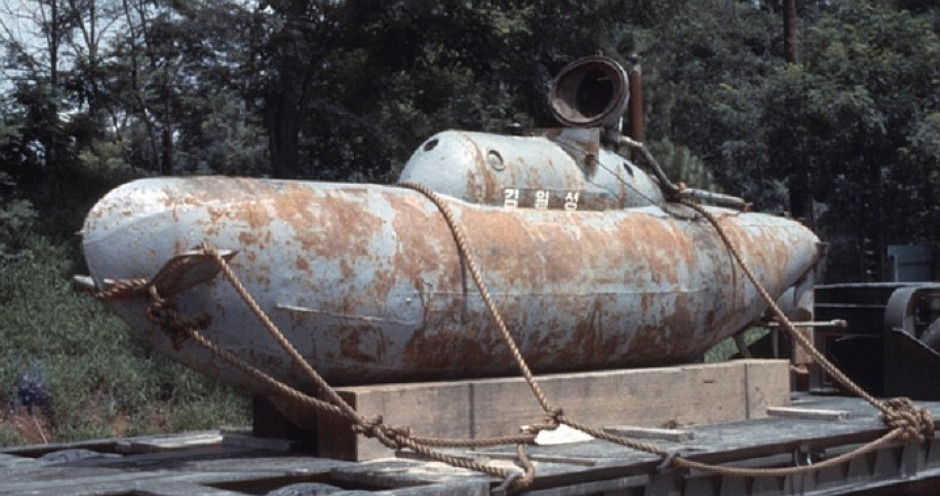
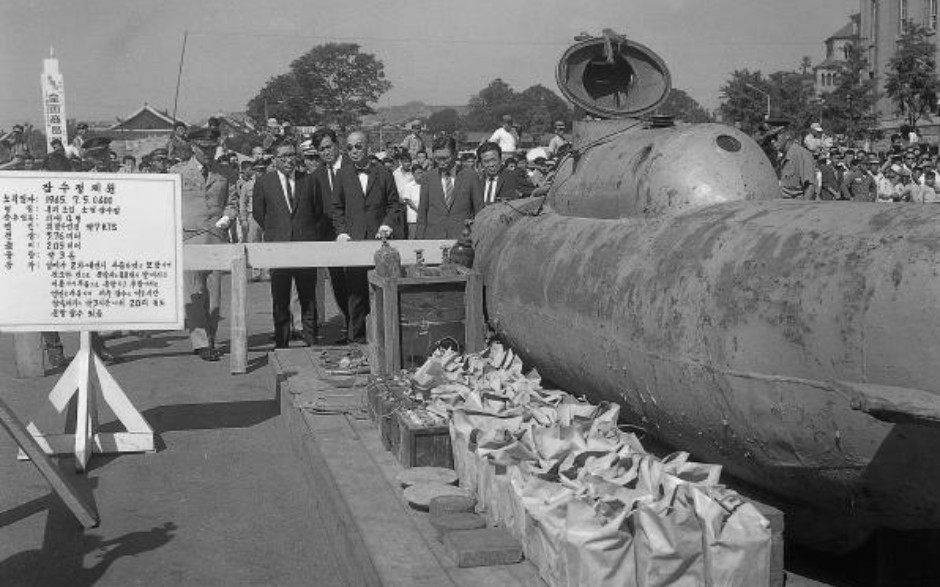
The captured midget submarine, 1965
According to declassified CIA documents, North Korea imported six 16 meter long midget submarines from Yugoslavia in 1973-74. (Note that I have been unable to substantiate this, or tie down the design. Yugoslavia did have a submarine building capability but was not producing midget submarines for its own use at this time). Around this time they also received ROMEO Class attack submarines from China. These were put into local production with Chinese help. By the early 1980s several classes of midget submarines were under construction, possibly based on the Yugoslav design and/or technology.
The early designs were 18 meter and 21 meter midget submarines (known by their length, and possibly by the codename YUGO Class). At least 29 of the 18m and 7 of the 21m designs were built at Sinpo on the East Coast. These were likely indigenous designs but based on the Yugoslavian boats. No confirmed images exist in the public domain.
A 32 meter midget submarine with two external torpedo tubes was launched in 1984 at Najin on the East Coast. No photos exist but it the below sketch is based on a description in the CIA briefing:
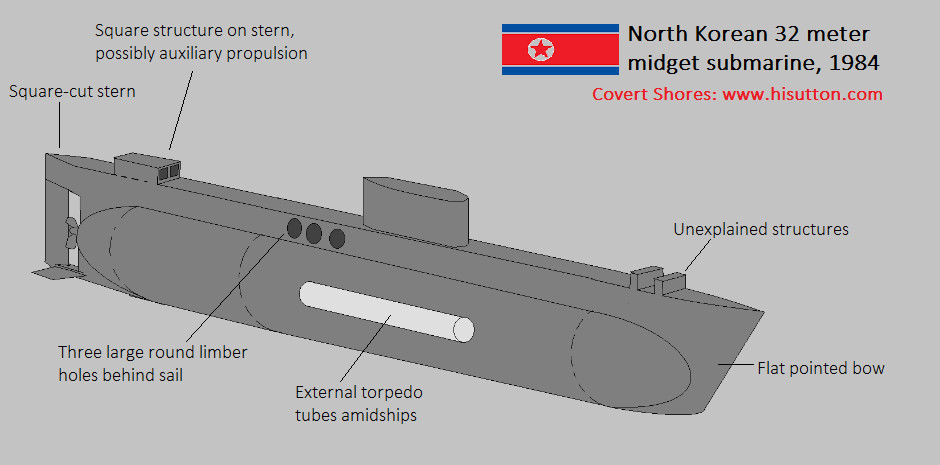
A single 41 meter submarine was constructed around the same time (possibly earlier). This also had a cutting bow like the 32m type and may have been a dedicated Special Forces transport submarine (SSLP). No photos and very little information exists in the public domain.
The ultimate book of Special Forces subs Covert Shores 2nd Edition is the ONLY world history of naval Special Forces, their missions and their specialist vehicles. SEALs, SBS, COMSUBIN, Sh-13, Spetsnaz, Kampfschwimmers, Commando Hubert, 4RR and many more.
Check it out on Amazon
ROMEO-Mod, The 'New' Ballistic Missile Submarine
First revealed on July 23 2019, it is unclear whether this boat has been launched yet (at the time of writing). Footage has shown Kim Jong Un inspecting the submarine, probably in Sinpo on the east coast. Although described as “newly built” in propaganda, it is clearly a rebuilt ROMEO class submarine. Three missile tubes have been added to a new sail.
The addition of the missile silos, likely for the Pukgeukseong-5 (북극성-5) missile, comes at a cost of the aft batteries. This likely limits underwater endurance significantly.
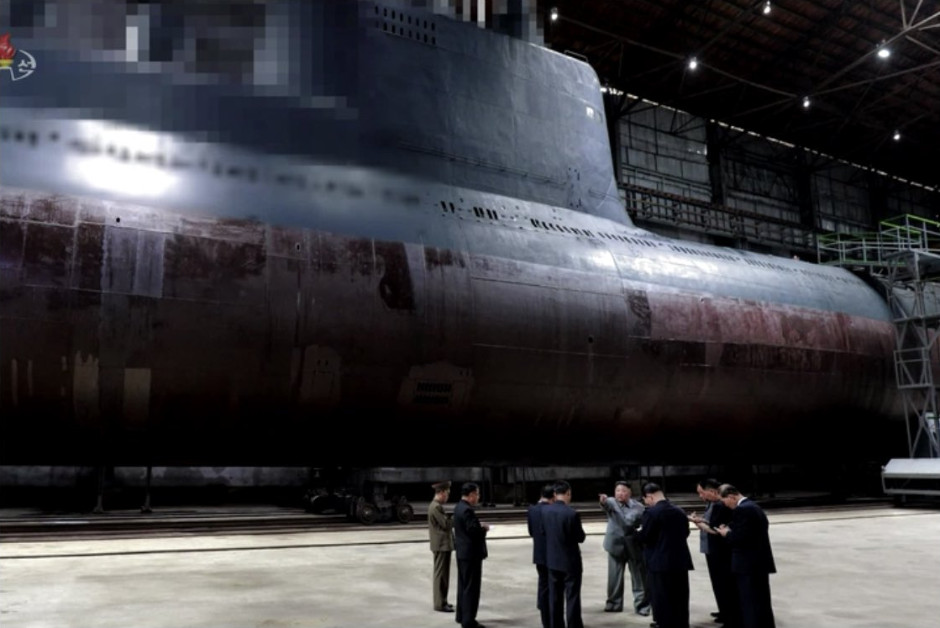
Gorae Class (SINPO-B Class) (신포급 잠수함) Ballistic Missile Submarine (SSB)
Nuclear armed ballistic missile submarines are an exclusive club. Until now only US, UK, France, Russia, China and India have them. With the Gorae Class (initially labelled the SINPO-B Class by analysts), North Korea joined the club, bringing more distant targets within range.
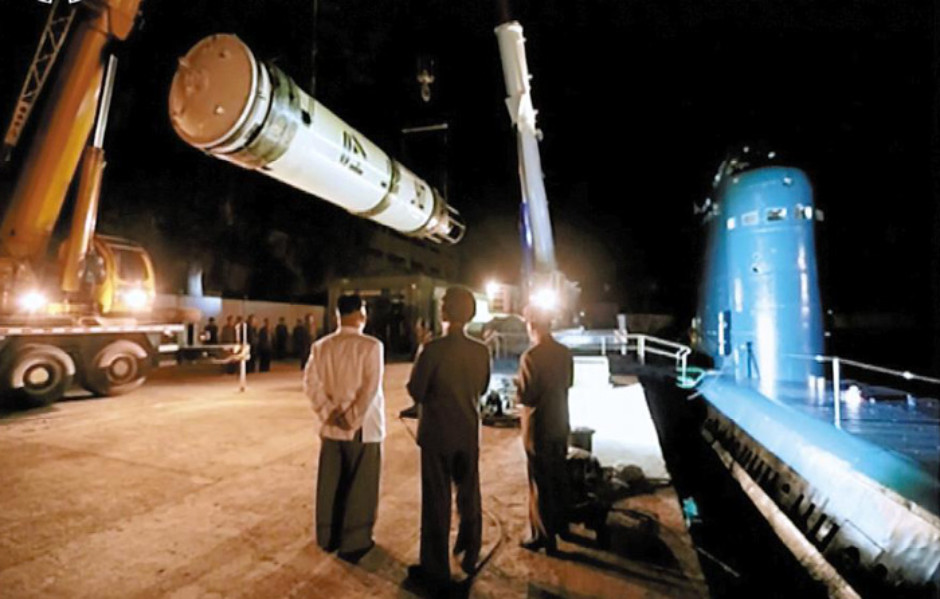
The Gorae Class is however much smaller and less capable than other ballistic missile submarines. Yet whatever the submarine's sea-keeping and endurance are relative to proper SSBNs, regional targets such as Japan, Guam and even Hawaii may be within range. The submarine however, with its single tube, should be viewed as a test platform with only limited operational capabilities.
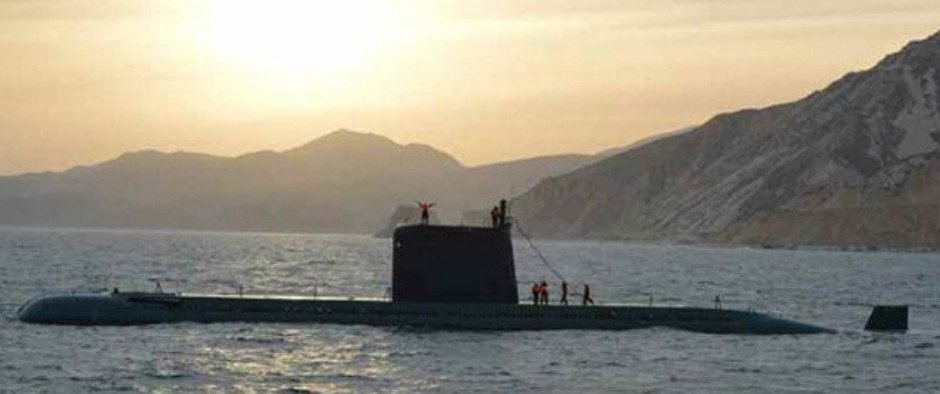
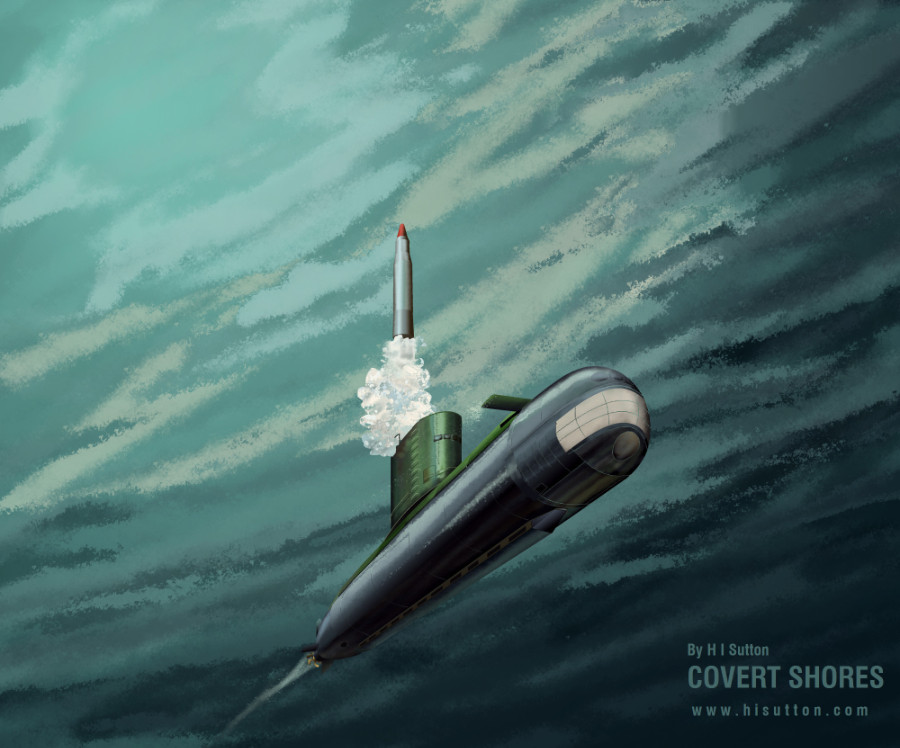
The GORAE Class carries a single NK-11 “북극성-1” (Pukgeukseong-1 = 'North Star-1' = 'Polaris-1') Submarine launched Ballistic Missile (SLBM) in the sail. The configuration is similar to the Soviet GOLF Class ballistic missile submarine, some of which were scrapped in North Korea, but the similarities end there.

Pukgeukseong-1 Specification
Length: 9.3m
Diameter: 1.5m
Weight: 14 metric tons
Warhead: Single nuclear weapon
Propulsion: Solid fueled rocket (oiginally a Liquid fueled rocket motor)
Launch: Submerged, ignited (not ejected)
Range: TBC
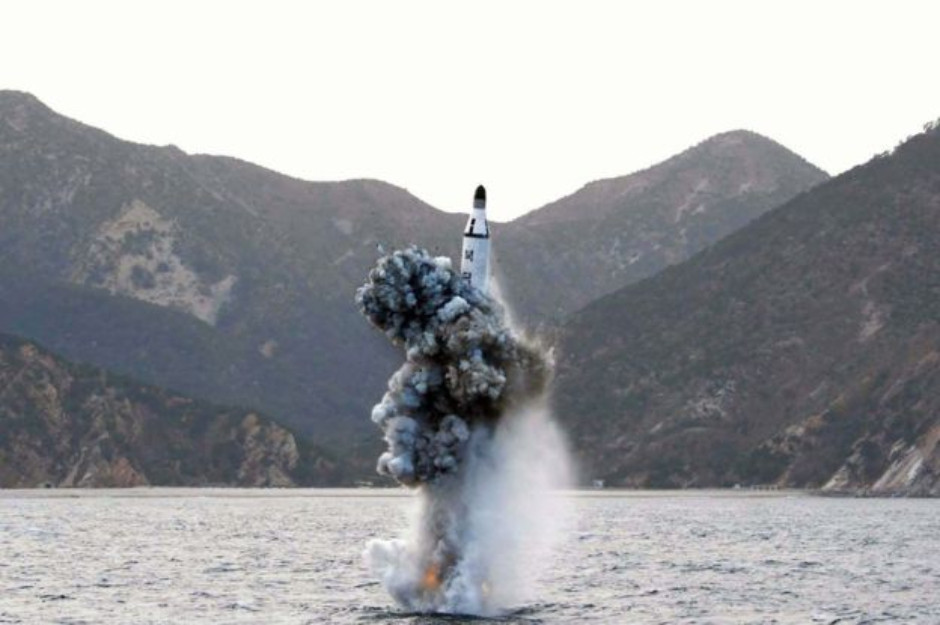
ROMEO Class (Project-633 / Type-033) Attack Submarine (SS)
More modern than the now-retired WHISKEY Class, these are the largest submarines in North Korean inventory. 7 boats were imported from China in 1973. This was followed by construction of the first 11 local versions at Sinpo shipyard on the East Coast from 1974 to 1979. Production resumed, probably without Chinese help, from 1985 to 1996. As many as 20 are reported in service although numbers are likely declining over time. At least one has been modified as a ballistic missile submarine and more might follow.
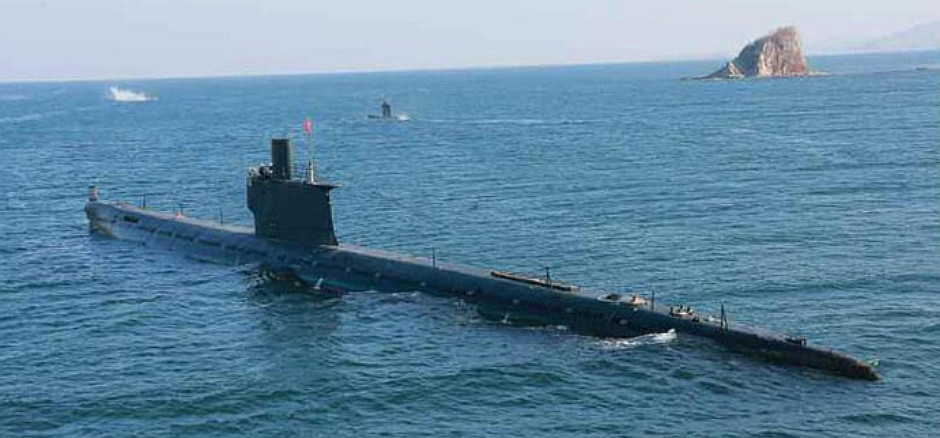
Originally designed in the 1950s, the Russian ROMEO Class represents a modest anti-shipping threat in the Yellow Sea and Sea of Japan (aka East Sea). Their operational range would allow patrols in the East China Sea and Western Pacific but this appears operationally ambitious for the North Korean Navy.
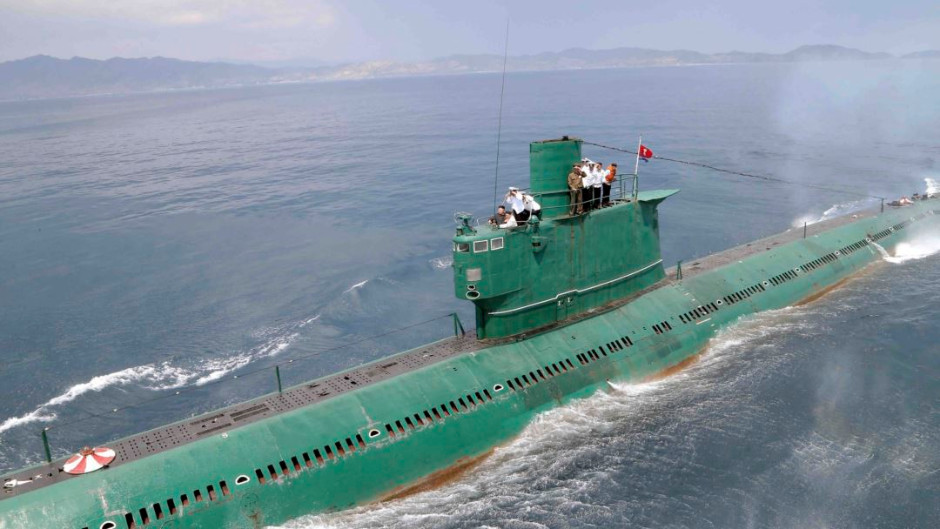
North Korean leader Kim Jong-Un visiting a ROMEO Class submarine, 2014
Although it is probable that some have received some upgrades, overall the equipment standard is likely to be extremely basic and/or vintage.
Specification
Displacement: 1,328 tons surfaced, 1,712 tons submerged
Length: 76.68 m (251 ft)
Beam: 6.72 m (22 ft)
Speed: 15.31 knots surfaced, 13.18 knots submerged
Operating depth: 724 meters (2,375 ft)
Crew: 64
Endurance: 3,820 nautical miles @ 9 knot with snorkel (normal fuel load), 260 nautical miles submerged on batteries (economocal speed)
Armament: 8 × 533mm (21in) torpedo tubes (6 forward, 2 aft) with 14 torpedoes
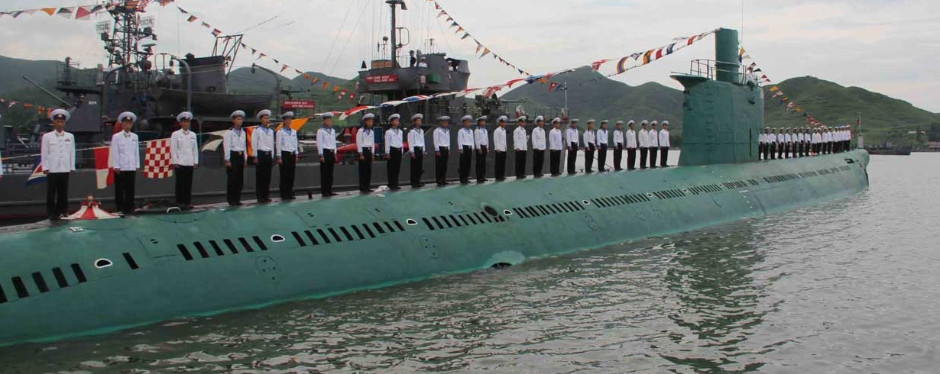
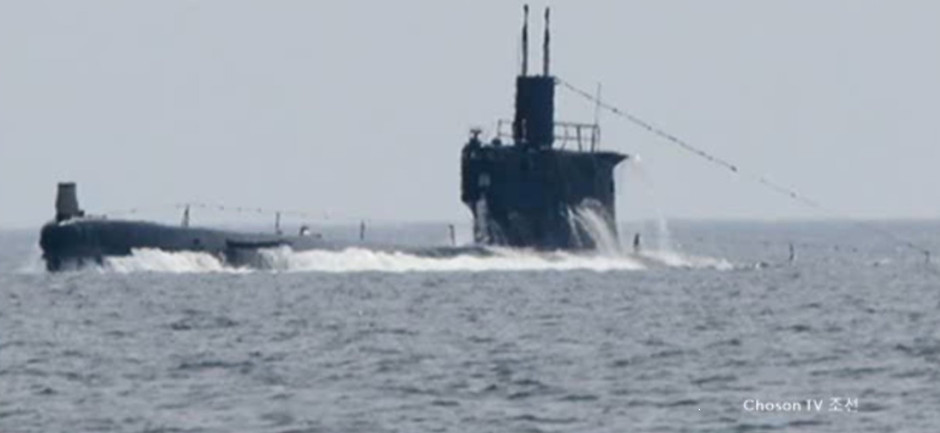
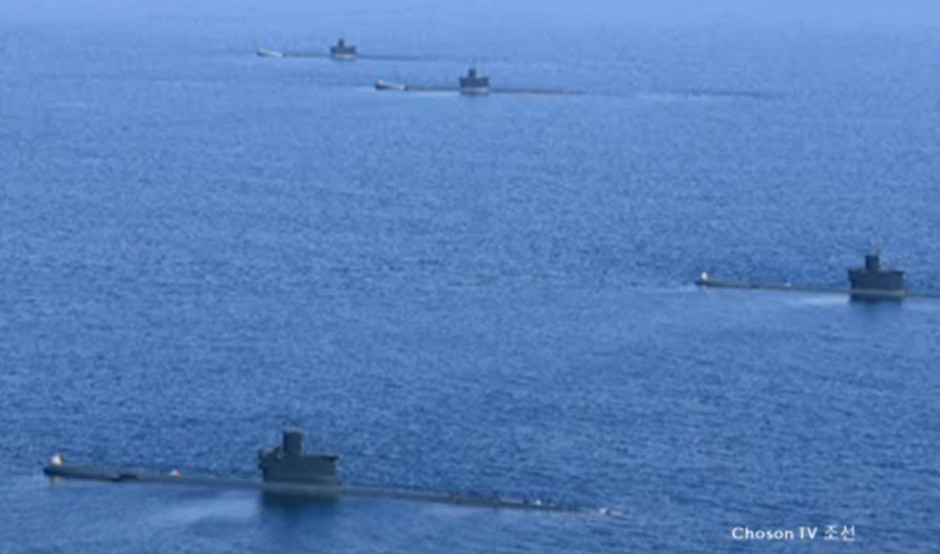
North Korean ROMEO Class SS seen exercising for the cameras. (added 26th April 2017)
Sang-O II Class Midget Submarine (SSM)
At least two enlarged SANG-O boats were produced. These are 39m long and have a redesigned sail. Exact modifications are unclear but the increased length may allow for torpedo reloads.

Specification
Displacement: 350t surfaced, Est. 440t submerged
Length: 39 meters
Beam: 3.8 meters
Height: 6.7 meters overall
Power: 1 diesel engine, 1 electric motor
Speed TBC
Range: TBC
Max Depth: 150 meters
Crew: TBC
Armament (attack sub): 2 x 533-mm torpedo tubes, possibly up to 4 reloads.
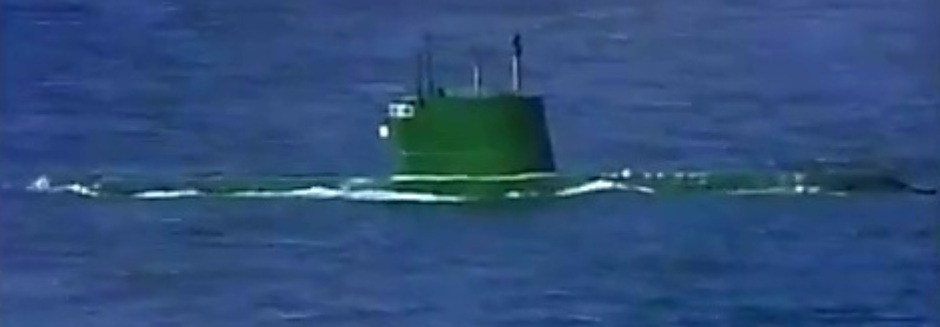
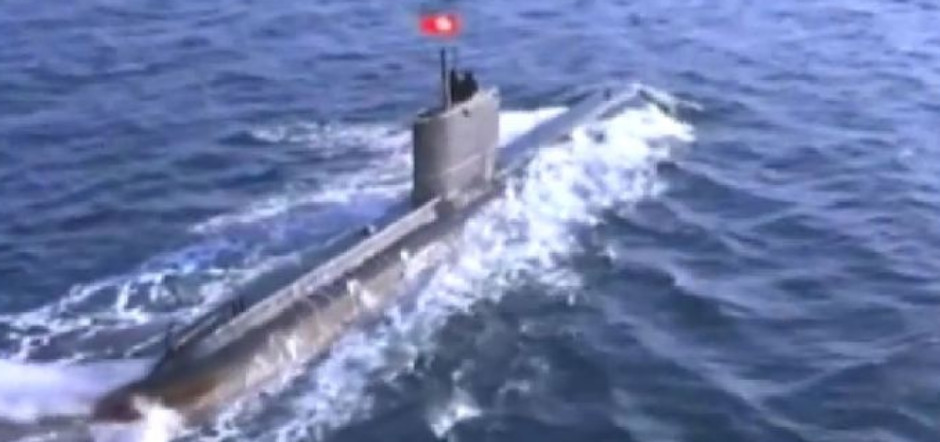
Sang-O Class (상어급 잠수함) Midget Submarine (SSM)
The SANG-O (Shark) is larger and more capable than the YUGO Class. It is the most numerous North Korean type and as many as 40 boats may be in service.
At 35 meters in length it is somewhere between a true midget submarine and a small coastal submarine like the German Type-206. Like midget submarines however its torpedo armament is limited to what is in the tubes with no space for reloads inside the boat. This limits its combat persistence in the anti-shipping role.
Construction of the class began at Sinpo on the East Coast in 1991. Most seem to have been built from 1991-1997, including some on the West Coast (possibly at Nampo).

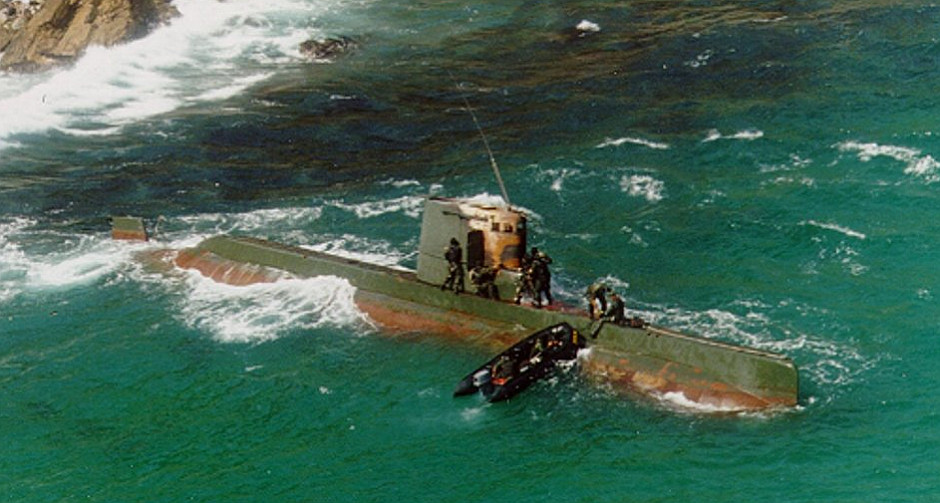
A Sang-O damaged during an infiltration mission off South Korea on 8th September 1996. It had landed 3 agents on 15th September and was attempting pick them up when its propeller was damaged. 25 crew and commandos escaped and fought a series of skirmishes with South Korean troops while attempting to flee to the border. One was captured and the rest were killed, ten by their own commander who appears to have committed suicide. 11 South Korean soldiers and 6 civilians were also killed.

The captured Sang-O is now on display at the Tongil Park in South Korea. Its propeller, which is shrouded, is conspicuously absent in this image. It was sheared off and is displayed next to the boat. Photo Mark Snape (www.flickr.com/photos/marksnape/)
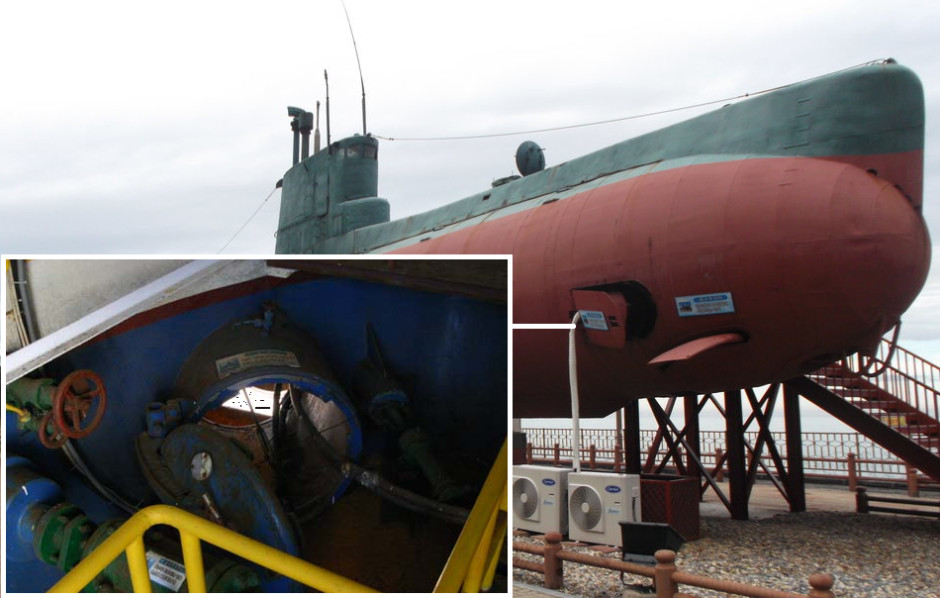
The Special Forces / infiltration version has no torpedo tubes but a diver lock-out on the lower starboard side.
Specification
Displacement: 277t surfaced, 370t submerged
Length: 35 meters
Beam: 3.8 meters
Height: 6.7 meters overall
Power: 1 diesel engine, 1 electric motor
Speed 7.2 knots surfaced, 8.8 knots submerged
Range: 1500 nautical miles
Max Depth: 150 meters
Crew: 15
Armament (attack sub): 2 x 533-mm torpedoes with no reloads
Armament (Special Forces /infiltration version): None. 5 infiltrators and 6 KWP Reconnaissance Bureau Cadre as passengers

Yono Class / MS-29 Midget Submarine (SSM)
The YONO Class (also Romanized as Yoneo, meaning Salmon) is a direct successor of the YUGO Class. Bearing a strong outward resemblance to the earlier design, it is longer with a larger diameter hull. Conditions inside remain cramped with no reloads for the twin torpedo tubes.
Fleet estimates are difficult but some sources cite 10 units. A YONO Class boat was reported as involved in the Cheonan sinking in 2010, and one was reported lost in 2016.

Specification
Displacement: 130t submerged
Length: 29 meters
Beam: 2.75 meters
Power: 1 diesel engine, 1 electric motor. 1 retractable outboard electric thruster
Speed Est. 10 knots surfaced, 4 knots submerged
Range: TBC
Max Depth: TBC
Crew: Est. 7 + 2-6 Special Forces / Agents
Armament: 2 x 533-mm torpedoes with no reloads
Much of what we know about the YONO comes from a licensed copy of the design produced in large numbers in Iran. Iran originally received four YONO Class submarines from North Korea in the early 2000s. It then produced its own copy as the IS-120 Ghadir Class. The Ghadir differs in some details such as the protruding attack sonar on the bow and small diver stores locker mounted externally in front of the sail.

SINPO-D, unidentified Midget Submarine (SSM)
This submarine at least seems to have a designation, assigned by outside forces. Sinpo-D was first seen in commercial satellite imagery of North Korea's secretive submarine yard at Sinpo. North Korean watchers at 38 North first noticed the object, which I identified as a likely submersible. Since then, additional imagery has confirmed that it is a small submarine, approximately 16 meters long. There has been no announcement from North Korea.
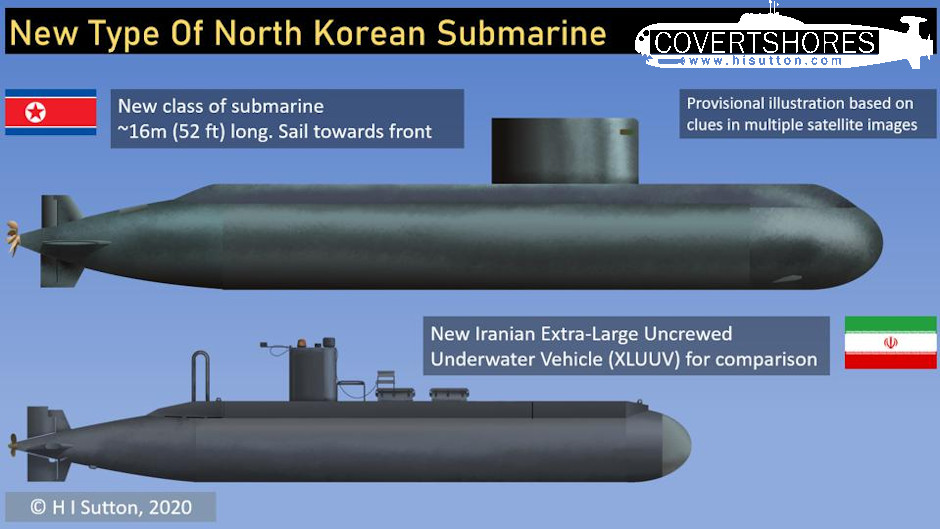
Yugo Class / P-4 Midget Submarine (SSM)
Very few if any of the original 18m and 21m YUGO Class boats remain in service. However a 24m version, sometimes known as the P-4 type is in service. It has also been exported to Vietnam.
This is a neatly laid out design with streamlined bow and clean lines. Except for an unusual stern configuration with the hydroplanes and dual rudders beneath the hull. This configuration is reminiscent of the German Type-205 submarine. Unlike the Russian/Chinese ROMEO Class submarines constructed in North Korea the YUGO P-4 is a single-hull design. This removes any serious suggestion that it is based on a Russian design.
Unlike earlier types it has two 533mm (21”) torpedo tubes within the hull. These take up most of the forward half of the submarine but there is room for a lock-out chamber for divers about mid-way between the bow and the sail. This exits out of the top of the casing. A modest sonar / sensor fit allows this boat to operate as both an inshore ISR (Intelligence Surveillance and Reconnaissance) platform, including Special Forces or agent operations, or as an attack submarine. Its range and sea keeping limit it to littoral operations however.
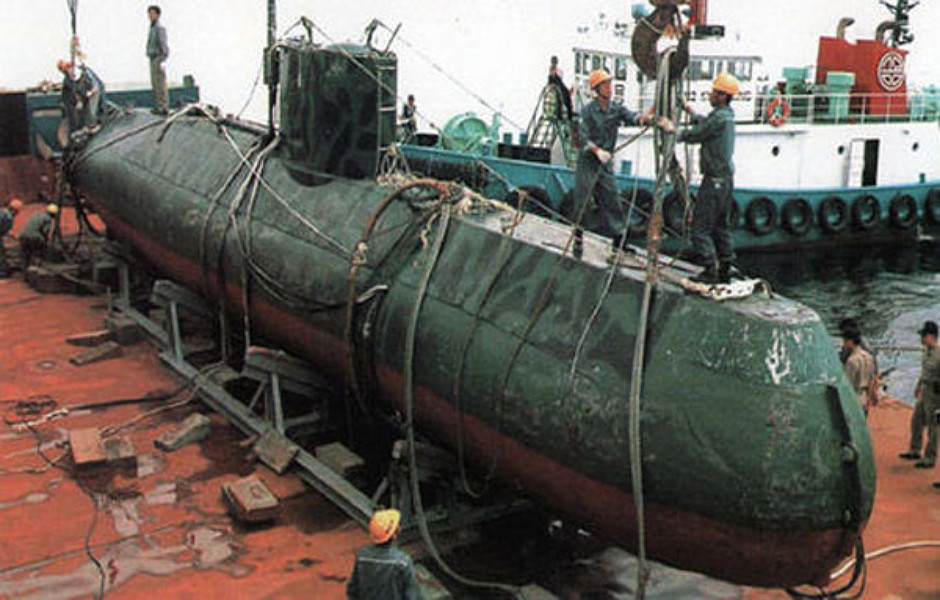
A P-4 submarine was captured by South Korean forces in 1998 after it became entangled in fishing nets. The crew committed suicide and scuttled the boat but it was raised and put into limited service by the South Korean Navy. It is now retired and displayed at the Submarine Base at Busan (35.133723° N, 128.619805° E).

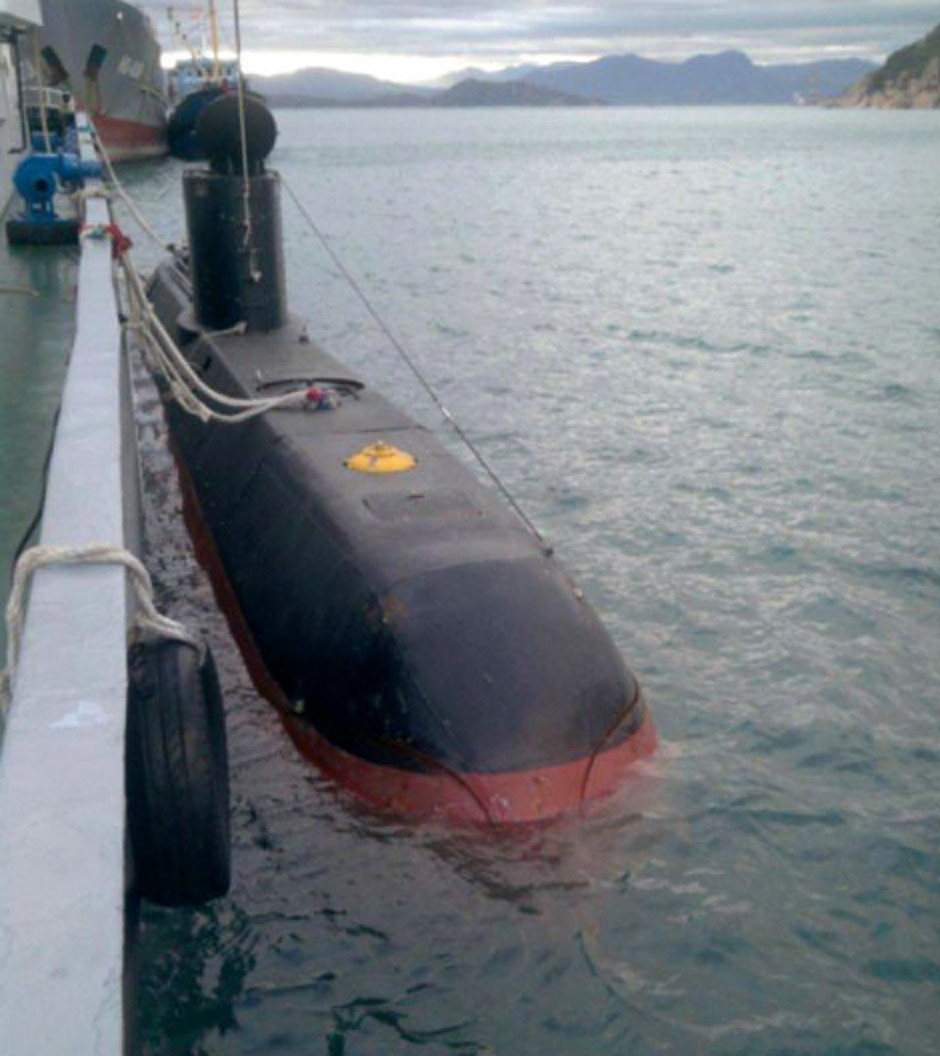
Vietnam operates two YUGO Class boats imported from North Korea. Although rarely photographed these provide valuable insights into the type.
Specification
Displacement: 90t submerged
Length: 24 meters
Beam: 3.1 meters
Power: 1 diesel engine, 1 electric motor
Speed Est. 10 knots surfaced, 4 knots submerged
Range: TBC
Max Depth: TBC
Crew: 5 + 2-6 Special Forces / agents
Armament: 2 x 533-mm torpedoes with no reloads (some sources say 406mm torpedoes)
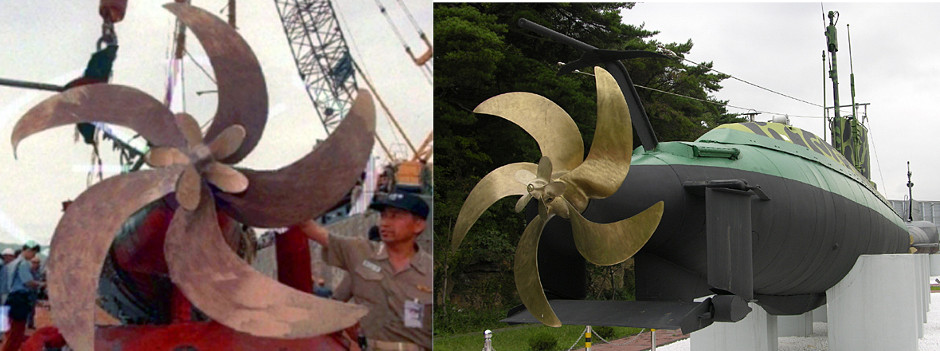
The captured North Korean example had an unusual five-blade screwback propeller with a second smaller propeller behind it. Both rotate in the same direction.
Related articles (Full index of popular Covert Shores articles)

 North Korean Modified-Romeo Class ballistic missile submarine w/Cutaway
North Korean Modified-Romeo Class ballistic missile submarine w/Cutaway

 North Korean Gorae Class SSB
North Korean Gorae Class SSB

 North Korean MS-29 YONO Class midget sub. w/Cutaway
North Korean MS-29 YONO Class midget sub. w/Cutaway

 Chinese Navy's First Cruise Missile Submarine, Type-033G Wuhan Class. w/Cutaway
Chinese Navy's First Cruise Missile Submarine, Type-033G Wuhan Class. w/Cutaway




